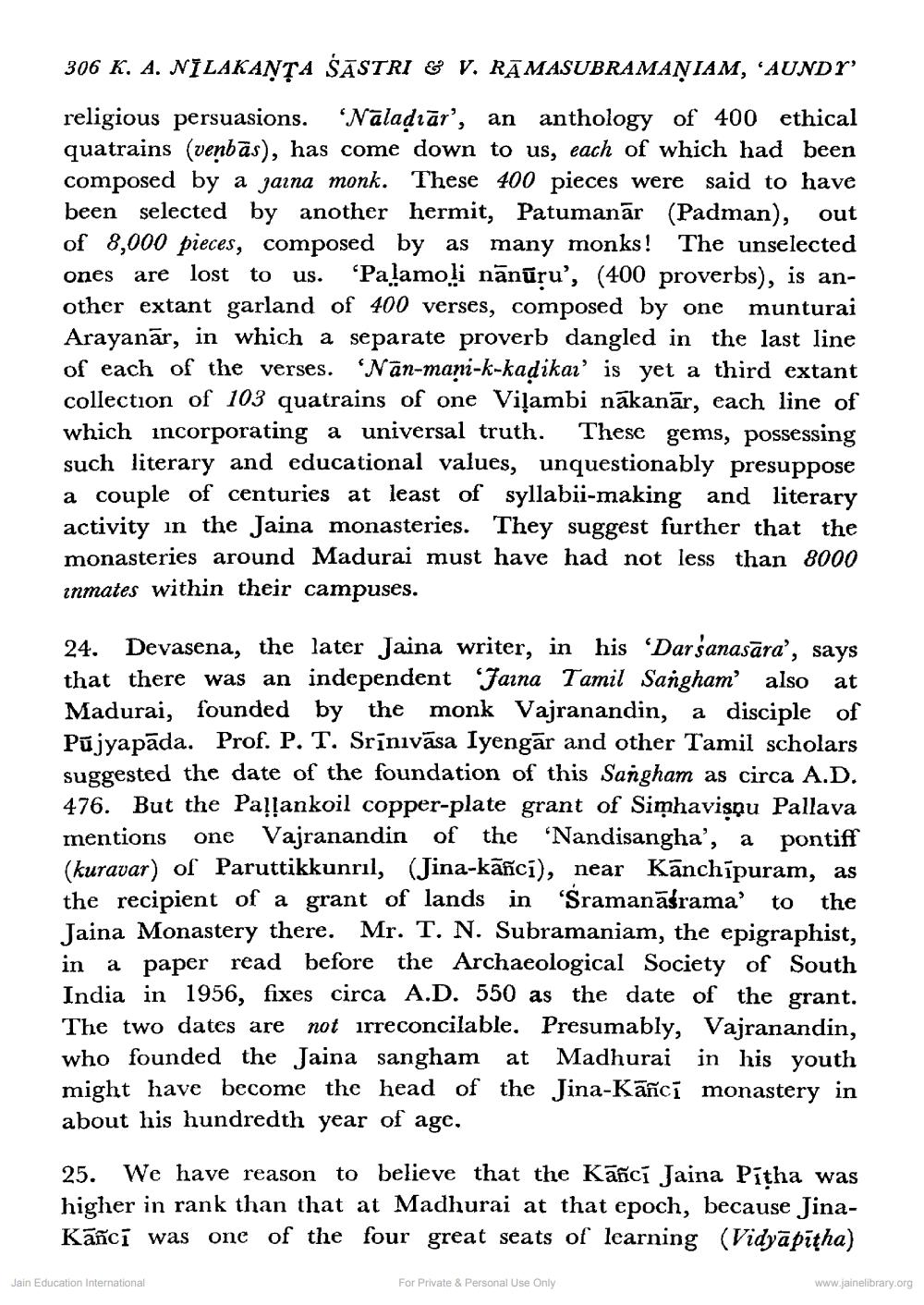________________
306 K. A. NILAKANȚA ŚĀSTRI & V. RĀMASUBRAMANIAM, `AUNDY
religious persuasions. Nāladiār', an anthology of 400 ethical quatrains (venbās), has come down to us, each of which had been composed by a paina monk. These 400 pieces were said to have been selected by another hermit, Patumanār (Padman), out of 8,000 pieces, composed by as many monks! The unselected ones are lost to us. “Palamoli nānūsu', (400 proverbs), is another extant garland of 400 verses, composed by one munturai Arayanār, in which a separate proverb dangled in the last line of each of the verses. 'Nan-mani-k-kadikar' is yet a third extant collection of 103 quatrains of one Viļambi nākanār, each line of which incorporating a universal truth. These gems, possessing such literary and educational values, unquestionably presuppose a couple of centuries at least of syllabii-making and literary activity in the Jaina monasteries. They suggest further that the monasteries around Madurai must have had not less than 8000 inmates within their campuses.
24. Devasena, the later Jaina writer, in his 'Daršanasāra', says that there was an independent Faina Tamil Sangham' also at Madurai, founded by the monk Vajranandin, a disciple of Pujyapāda. Prof. P. T. Srīnıvāsa Iyengār and other Tamil scholars suggested the date of the foundation of this Sangham as circa A.D. 476. But the Paļļankoil copper-plate grant of Simhavişņu Pallava mentions one Vajranandin of the 'Nandisangha', a pontiff (kuravar) of Paruttikkunril, (Jina-kāñcí), near Kanchīpuram, as the recipient of a grant of lands in 'Sramanāšrama' to the Jaina Monastery there. Mr. T. N. Subramaniam, the epigraphist, in a paper read before the Archaeological Society of South India in 1956, fixes circa A.D. 550 as the date of the grant. The two dates are not irreconcilable. Presumably, Vajranandin, who founded the Jaina sangham at Madhurai in youth might have become the head of the Jina-Kāñcī monastery in about his hundredth year of age.
25. We have reason to believe that the Kāñcí Jaina Pitha was higher in rank than that at Madhurai at that epoch, because JinaKāñcī was one of the four great seats of learning (Vidyāpītha)
Jain Education International
For Private & Personal Use Only
www.jainelibrary.org




